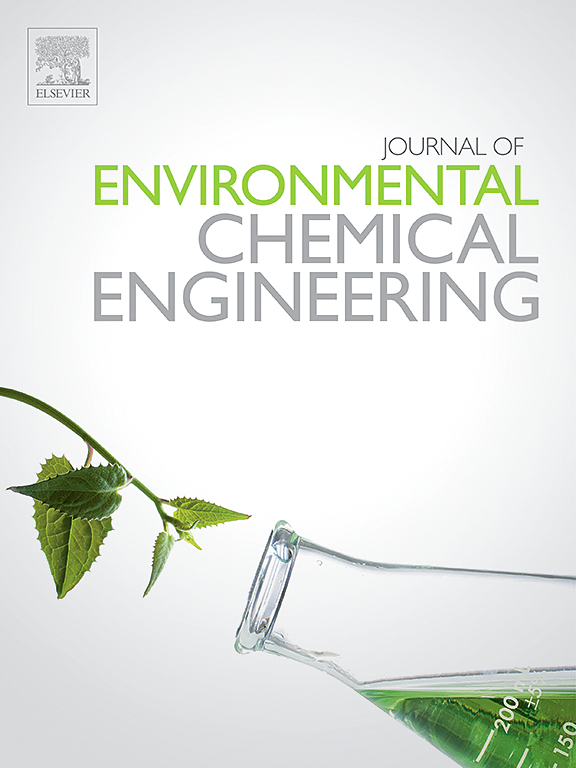高熵氧化物作为析氧反应电催化剂的研究进展
IF 7.4
2区 工程技术
Q1 ENGINEERING, CHEMICAL
引用次数: 0
摘要
由于四电子转移过程的存在,析氧反应(OER)成为一个重大的挑战。高熵氧化物(HEOs)由于其丰富的活性位点、较大的比表面积和优异的电化学性能而引起了人们的广泛关注。然而,了解HEOs的结构性质和电化学性能之间的关系仍然具有挑战性。因此,我们全面回顾了OER的基本原理,特别强调了焦耳加热和碳热冲击技术在合成HEOs方面的最新进展。此外,我们比较了岩盐、尖晶石和钙钛矿三种晶体结构对OER性能的影响,其中钙钛矿结构的HEOs在构象熵设计和OER性能方面优于其他晶体结构。与以往对HEOs的研究相比,我们揭示了HEOs材料中催化活性增强的潜在因素,包括高价阳离子掺杂、高熵工程诱导的晶格畸变、氧空位的调制以及对电子结构和活性的深入解析的理论计算。该研究为高性能HEOs电催化剂的设计提供了新的见解和坚实的理论基础。本文章由计算机程序翻译,如有差异,请以英文原文为准。
High-entropy oxides as promising electrocatalysts for oxygen evolution reaction: A review
It is acknowledged that the oxygen evolution reaction (OER) becomes a significant challenge owing to tetra-electronic transfer process. High-entropy oxides (HEOs) have attracted significant interest due to their abundant active sites, large specific surface area, and excellent electrochemical properties. However, understanding the relationship between the structural properties and electrochemical performance of HEOs remains challenging. Therefore, we comprehensively review the fundamental principles of OER, with particular emphasis on recent advancements in Joule-heating and carbothermal shock techniques for synthesizing HEOs. Furthermore, we compare the effects of rock salt, spinel, and perovskite crystal structures of HEOs on OER performance whereas perovskite HEOs superior the other crystal structures in terms of the design of the conformational entropy as well as the performance of OERs. In contrast to previous reviews on HEOs, we reveal potential factors for catalytic activity enhancement in HEOs materials, including high-valent cation doping, high-entropy engineering-induced lattice distortion, modulation of oxygen vacancies, and theoretical calculations for an in-depth resolution of electronic structure and activity. This study provides new insights and a solid theoretical foundation for the design of high-performance HEOs electrocatalysts.
求助全文
通过发布文献求助,成功后即可免费获取论文全文。
去求助
来源期刊

Journal of Environmental Chemical Engineering
Environmental Science-Pollution
CiteScore
11.40
自引率
6.50%
发文量
2017
审稿时长
27 days
期刊介绍:
The Journal of Environmental Chemical Engineering (JECE) serves as a platform for the dissemination of original and innovative research focusing on the advancement of environmentally-friendly, sustainable technologies. JECE emphasizes the transition towards a carbon-neutral circular economy and a self-sufficient bio-based economy. Topics covered include soil, water, wastewater, and air decontamination; pollution monitoring, prevention, and control; advanced analytics, sensors, impact and risk assessment methodologies in environmental chemical engineering; resource recovery (water, nutrients, materials, energy); industrial ecology; valorization of waste streams; waste management (including e-waste); climate-water-energy-food nexus; novel materials for environmental, chemical, and energy applications; sustainability and environmental safety; water digitalization, water data science, and machine learning; process integration and intensification; recent developments in green chemistry for synthesis, catalysis, and energy; and original research on contaminants of emerging concern, persistent chemicals, and priority substances, including microplastics, nanoplastics, nanomaterials, micropollutants, antimicrobial resistance genes, and emerging pathogens (viruses, bacteria, parasites) of environmental significance.
 求助内容:
求助内容: 应助结果提醒方式:
应助结果提醒方式:


